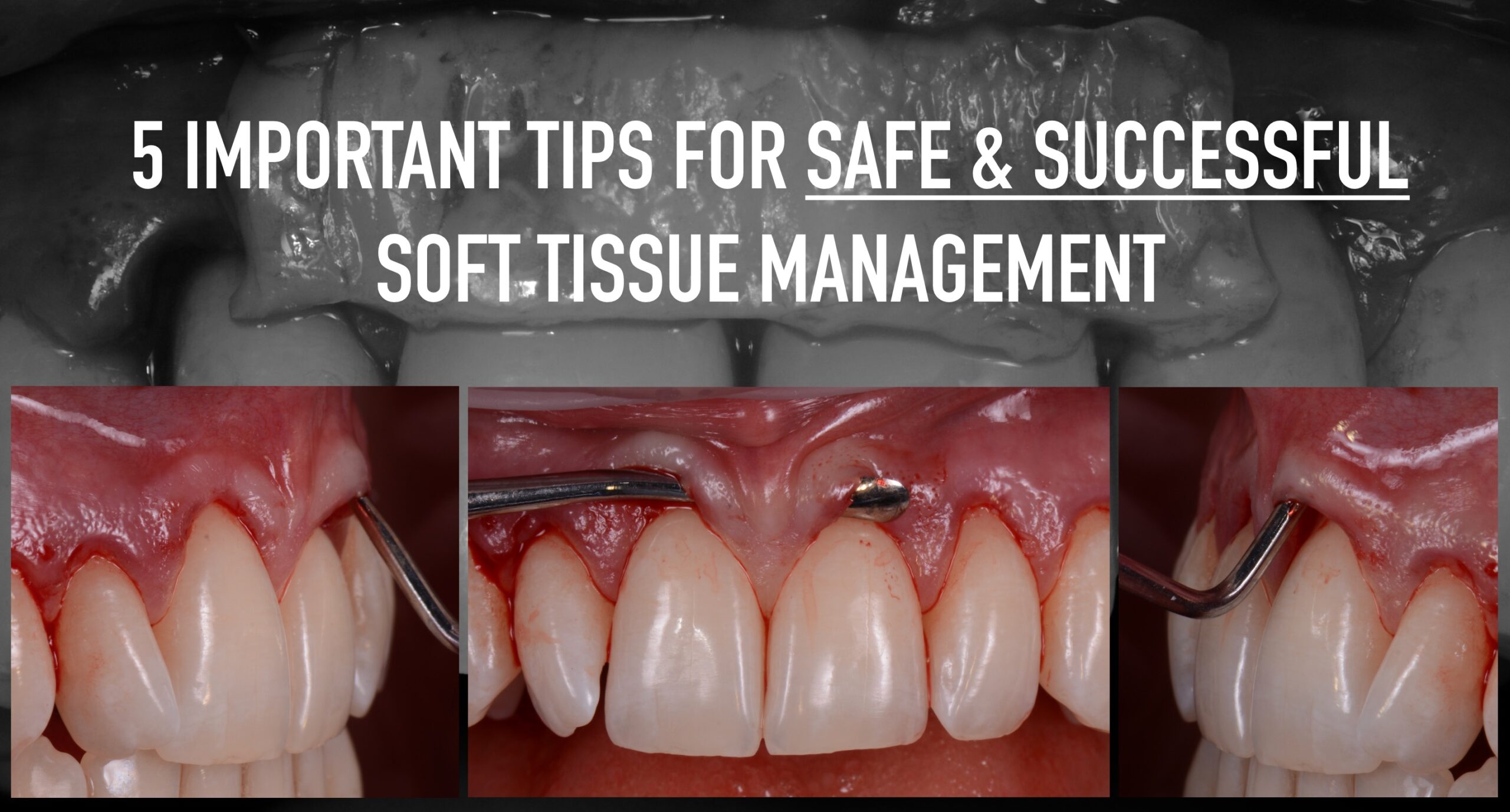These are the 5 most important factors that you should take into account when performing soft tissue grafting and management:
1-. Anatomy of donor and recipient site. (safe procedure)
2-. Blood supply for proper nutrition.
3-. Soft Tissue thickness.
4-. Time Management.
5-. Hydration of the tissues.
All this information is available at the Soft Tissue Management and Grafting Mastercourse in Dental Surgery Channel®.
Anatomy of donor and recipient site (safe procedure):
The Anatomy of upper maxilla and mandible are not only covered by soft tissue layers but also blood vessels, important arteries, nerves and anatomical structures such as greater palatine artery or mental foramen area that must be respected and avoided.
By understanding the anatomy we will be more safe when harvesting or managing the soft tissues and this is a key factor for a safe procedure.
Blood supply for proper nutrition:
When harvesting a graft, we are leaving a donor site exposed which will need to regenerate without complications. For this reason, we must understand the blood supply that will help the donor area to regenerate and progressively heal.
When the harvested graft is placed over the recipient site, is important to know from where the blood supply will reach the graft and the surrounding tissues that hosts it.
By understanding the blood supply path, we will ensure a proper nutrition, avoid complications and a faster healing.
Soft Tissue thickness:
The soft tissue has different thicknesses depending on the area of the maxilla or mandible that is referred.
The soft tissue biotype has an important role on our decision making process when deciding to either tunnel or perform an open flap surgery for root coverage.
Also a thick tissue will be more prone to heal, survive and easier to manage. This is the reason for analyzing this aspect before performing any soft tissue grafting technique.
Thinner tissues submitted to tension of the suture will tend to necroses and expose the surgical site to the oral environment and potential infection.
Use the appropriate instrumentation (micro surgical instruments when needed) to avoid traumatizing the tissues.
Time management:
The longer the surgery takes, the less survival rate of the tissues when exposed to oral environment.
The donor and recipient sites over exposed will tend to give complications, more inflammation, etc…
It is important to take enough time to work properly but remember that as the time goes by, the tissues that have been traumatized, harmed or managed will tend to “die”…
Hydration of the tissues:
The tissues are made of water and the cells need water to survive. Not only because managing the soft tissues hydrated are easier to manage avoiding the tearing effect of the dryness but also the hydration provides the cells with the appropriate environment to survive.

